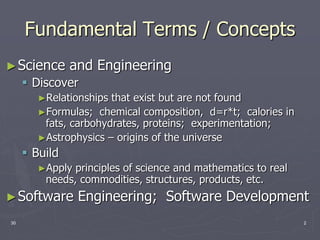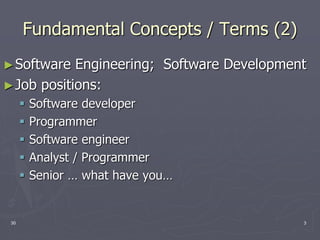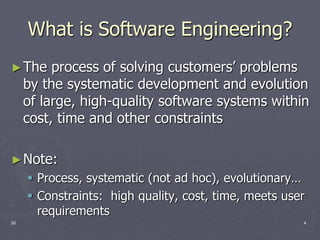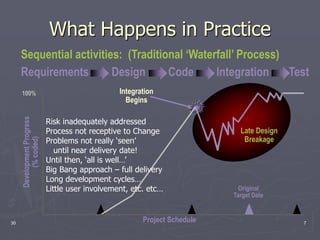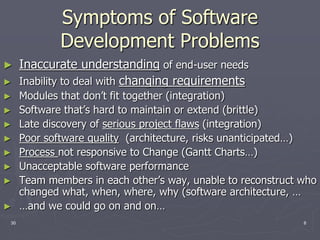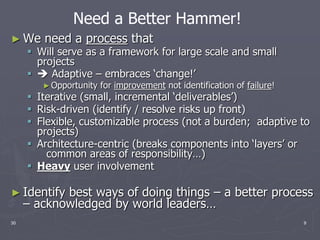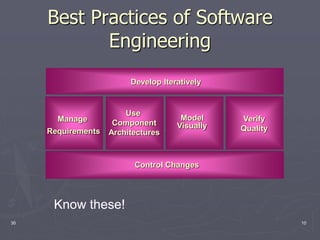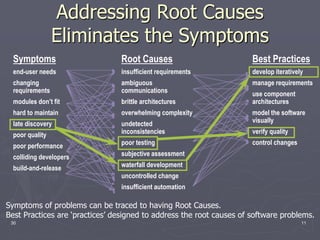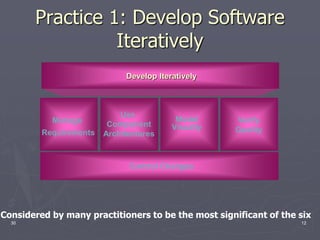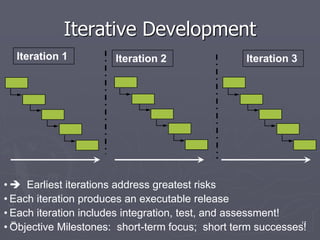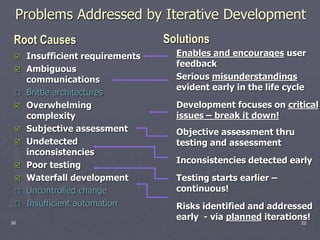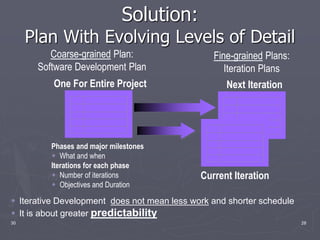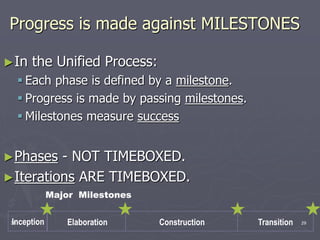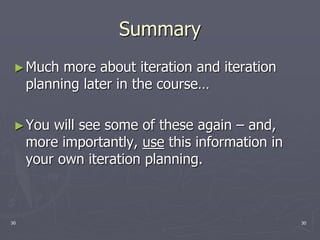This document discusses iterative software development and its benefits over traditional waterfall development. It notes that iterative development addresses risks earlier through incremental deliverables. Each iteration includes integration, testing, and assessment. This allows problems to be identified and addressed sooner. In contrast, waterfall development delays testing until late in the project and does not allow for feedback and changes between phases. The document recommends iterative development as a best practice to address common problems like changing requirements and late discovery of issues.

